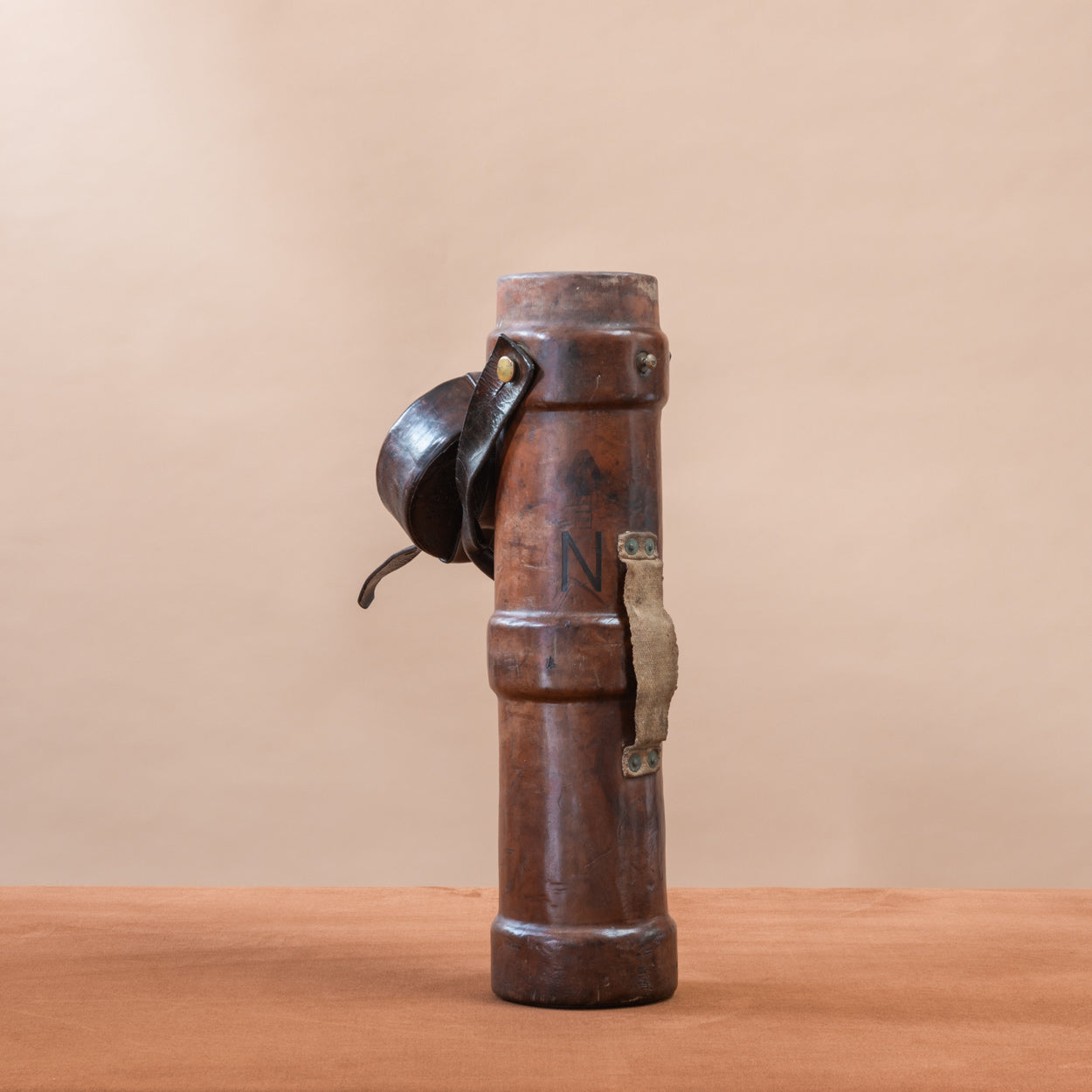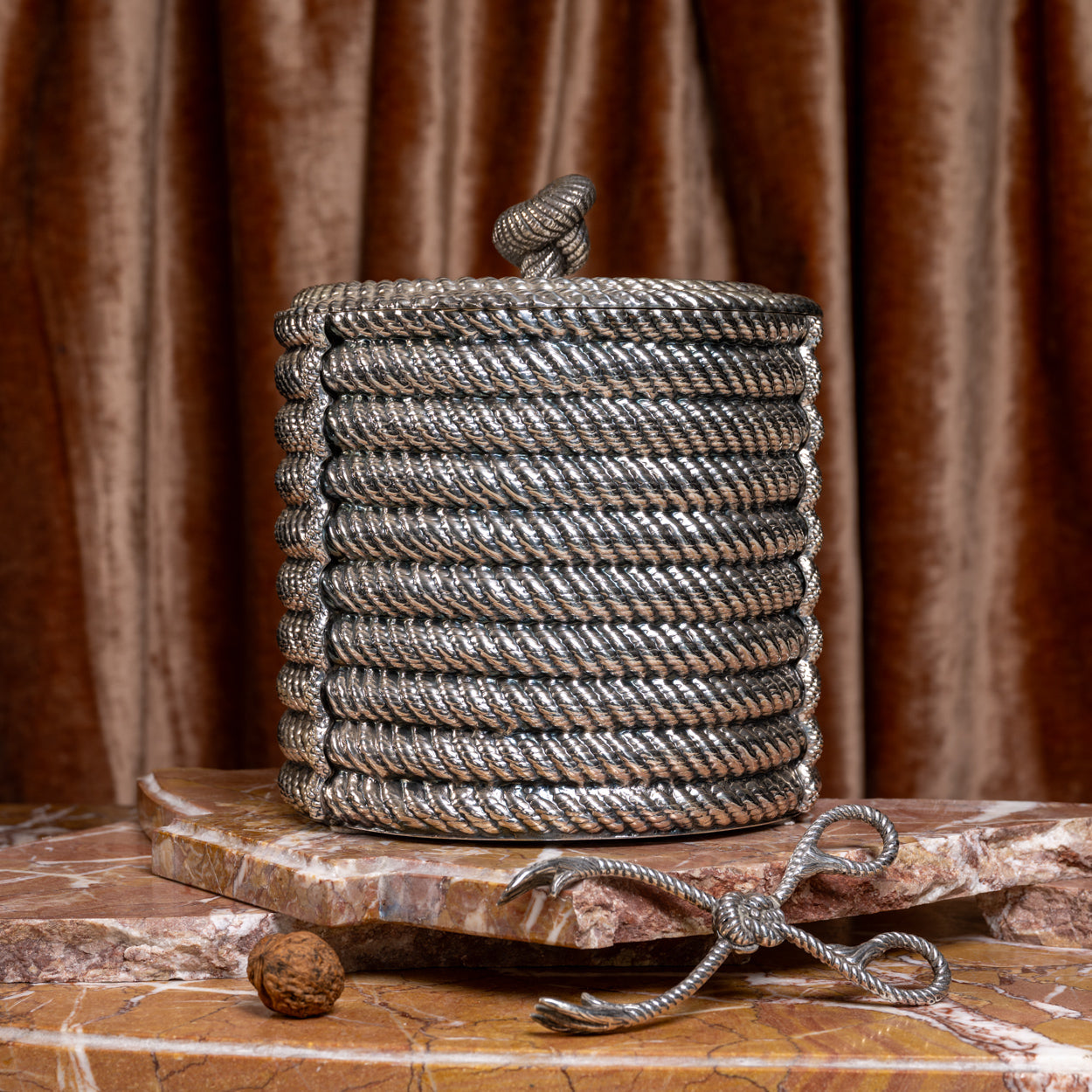
Philips' 19 Inch Black "Slate" Surface Globe
- Regular price
- £3,500.00
- Sale price
- £3,500.00
- Regular price
-
- Unit price
- /per
Adding product to your basket
Striking large scale black globe by George Philip and Son, from the 1950s. On an inclination mount with aluminium fittings fixed to a circular wooden base. Finished in matt black with land masses outlined in white. This allows for coloured chalk to be used on the surface to add information or illustrate movements across the globe and then to be easily removed. The condition of this globe is generally good but because the hollow sphere is constructed from aluminium which is a relatively soft metal, it is particularly susceptible to damage. There are therefore some light scratches, dents, and marks present on sections of the surface.
Dimensions: 48 cm/19 inches (Globe diameter) x 58.5 cm/23 inches (Height on stand).
George Philip, (1800–1882) was a cartographer and map publisher. He founded George Philip & Sons in 1834 in Liverpool initially as a bookseller and stationer, but rapidly expanding to become a publisher of primarily maps, atlases and educational works. He had one son, also George (1823–1902), who was admitted to the business in 1848.
George senior was born in Huntly, Aberdeenshire and by 1819 he had become assistant to the Liverpool bookseller, William Grapel before going on to start his own business. He used cartographers (such as John Bartholomew the elder, August Petermann, and William Hughes) to produce maps on copper plates. Philip then had these printed and hand-coloured by his women tinters. The business expanded rapidly and by the time he produced his county maps of 1862 he was using machine coloured maps produced on power-driven lithographic presses.
Philips' production of globes in the 19th century was mainly limited to associations with other British globe makers, including Smith & Sons, London, but in 1902 Philip ventured into the production of globes as a manufacturer, facilitated by the firm's establishment of the London Geographical Institute, a large factory for map, atlas, and globe production. Globes from this era are generally constructed by forming a sphere made either of card or fibreboard covered by gesso (plaster) to ensure smoothness.
The sphere was then overlaid with a map printed on long, thin elliptical strips of paper (known as gores) that narrow to a point at the North and South Poles.
Over the years, Philip acquired the production lines of other British globe makers including Malby, Betts, Smith and Johnston. The firm also supplied atlases and textbooks overseas starting with an atlas for Australian schools in 1865 and for New Zealand in 1869. The demand from board schools, established after 1870, enabled further expansion in the market for globes, atlases and wall maps.
DELIVERY
For online purchases exceeding £100 we currently offer free worldwide shipping.
RETURNS
We offer a 14 day to return policy.
If you wish to return or exchange an item please contact our London store at +44 (0)20 7584 7770 or by e-mail at shop@bentleyslondon.com
All returns should be sent back to us unused, in the original packaging provided with any tags still attached.
For full details of delivery and returns click here
You may also like
-
Small Leather Cordite Carrier
![]()
 Small Leather Cordite Carrier20TH_CENTURYCANVASFurniturelatest_arrivalsLEATHERmilitaryvintage_leather
Small Leather Cordite Carrier20TH_CENTURYCANVASFurniturelatest_arrivalsLEATHERmilitaryvintage_leather- Regular price
- £1,600.00
- Sale price
- £1,600.00
- Regular price
-
- Unit price
- /per
Sale Sold -
Aircraft Propeller Engine Model
![]()
 Aircraft Propeller Engine Model20TH_CENTURYALUMINIUMlatest_arrivalsmotoring_flying_and_sailing
Aircraft Propeller Engine Model20TH_CENTURYALUMINIUMlatest_arrivalsmotoring_flying_and_sailing- Regular price
- £1,400.00
- Sale price
- £1,400.00
- Regular price
-
- Unit price
- /per
Sale Sold -
Mid Tan Leather Cigar Case
![]()
 Mid Tan Leather Cigar Case20TH_CENTURYcigars_and_smokinglatest_arrivalsLEATHERvintage_leather
Mid Tan Leather Cigar Case20TH_CENTURYcigars_and_smokinglatest_arrivalsLEATHERvintage_leather- Regular price
- £425.00
- Sale price
- £425.00
- Regular price
-
- Unit price
- /per
Sale Sold -
Mid Brown Leather Cigar Case
![]()
 Mid Brown Leather Cigar Case20TH_CENTURYcigars_and_smokinglatest_arrivalsLEATHERvintage_leather
Mid Brown Leather Cigar Case20TH_CENTURYcigars_and_smokinglatest_arrivalsLEATHERvintage_leather- Regular price
- £345.00
- Sale price
- £345.00
- Regular price
-
- Unit price
- /per
Sale Sold -
Silver Plated Rope Ice Cube Bucket and Ice Tongs Set
![]()
 Silver Plated Rope Ice Cube Bucket and Ice Tongs Set20TH_CENTURYbarwarelatest_arrivalsSILVER
Silver Plated Rope Ice Cube Bucket and Ice Tongs Set20TH_CENTURYbarwarelatest_arrivalsSILVER- Regular price
- £3,600.00
- Sale price
- £3,600.00
- Regular price
-
- Unit price
- /per
Sale Sold













